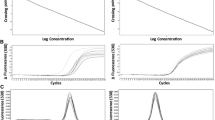Abstract
In order to quantitate the bovine immunodeficiency virus (BIV) infection in vitro, a BIV indicator cell line (BIVL) was established by transfecting baby hamster kidney cells with reporter plasmids containing the firefly luciferase gene driven by a BIV long terminal repeat promoter. The BIV activates promoter activity of the LTR to express luciferase upon infection. BIV infection could therefore by quantified by detection of luciferase activity. Compared to standard assays used to detect BIV infection, the BIVL-based assay is 10 times more sensitive than the the CPE-based assay, and has similar sensitivity with the viral capsid protein Western blot assay. BIV indicator cell line could detect BIV infection specifically. Luciferase activity of BIV infected BIVL cells showed a time dependent manner, and 60 h post infection is the optimal time to detect BIV infection. Luciferase activity of BIVL cells correlates with the BIV capsid protein expression. Moreover, a linear relationship was found between MOI and the activated intensity of luciferase expression. In brief, the BIV indicator cell line is an easy, robust and quantitive method for monitoring BIV infection.
Similar content being viewed by others
References
Avidan O, Bochner R Hizi A. 2006. The catalytic properties of the recombinant reverse transcriptase of bovine immunodeficiency virus. Virology, 351(1):42–57.
Barboric M, Taube R, Nekrep N, et al. 2000. Binding of Tat to TAR and recruitment of positive transcription elongation factor b occur independently in bovine immunodeficiency virus. J Virol, 74(13):6039–6044.
Blair W S, Isaacson J, Li X, et al. 2005. A novel HIV-1 antiviral high throughput screening approach for the discovery of HIV-1 inhibitors. Antivir Res, 65(2):107–116.
Braun M J, Lahn S, Boyd A L, et al. 1988. Molecular cloning of biologically active proviruses of bovine immunodeficiency-like virus. Virology, 167(2):515–523.
Carpenter S, Miller L D, Alexandersen S, et al. 1992. Characterization of early pathogenic effects after experimental infection of calves with bovine immunodeficiency-like virus. J Virol, 66(2):1074–1083.
Garcia J M, Gao A, He P L, et al. 2009. High-throughput screening using pseudotyped lentiviral particles: a strategy for the identification of HIV-1 inhibitors in a cell-based assay. Antivir Res, 81(3):239–247.
Geng Y, Kashanchi F, Wood C. 1992. Activation of bovine immunodeficiency-like virus expression by bovine herpesvirus type 1. Virology, 187(2):832–836.
Gonda M A, Oberste M S, Garvey K J, et al. 1990. Development of the bovine immunodeficiency-like virus as a model of lentivirus disease. Developments in biological standardization, 72:97–110.
Jones J, Rodgers J, Heil M, et al. 2007. High throughput drug screening for human immunodeficiency virus type 1 reactivating compounds. Assay Drug Dev Technol, 5(2):181–189.
Kalvatchev Z, Walder R, Barrios M, et al. 1995. Acquired immune dysfunction in rabbits experimentally infected with an infectious molecular clone of the bovine immunodeficiency virus (BIV127). Viral Immunol, 8(3):159–164.
Krah D L. 1991. A simplified multiwell plate assay for the measurement of hepatitis A virus infectivity. Biologicals, 19(3):223–227.
Li S, Zhu J, Peng Y, et al. 2005. Characterization of BIV Env core: implication for mechanism of BIV-mediated cell fusion. Biochem Biophys Res Commun, 329(2):603–609.
Liu S H, Chen H X, Chen J T, et al. 1997. Isolation and identification of a bovine spuma virus isolate 3026. Virol Sin, 13(2):140–145. (in Chinese)
Liu Z Q, Sheridan D, Wood C. 1992. Identification and characterization of the bovine immunodeficiency-like virus tat gene. J Virol, 66(8):5137–5140.
Mak C C, Brik A, Lerner D L, et al. 2003. Design and synthesis of broad-based mono-and bi-cyclic inhibitors of FIV and HIV proteases. Bioorg Med Chem, 11(9):2025–2040.
Norelli S, El D S, D’Ostilio D, et al. 2008. Response of feline immunodeficiency virus (FIV) to tipranavir may provide new clues for development of broad-based inhibitors of retroviral proteases acting on drug-resistant HIV-1. Curr HIV Res, 6(4):306–317.
Ochsenbauer-Jambor C, Jones J, Heil M, et al. 2006. T-cell line for HIV drug screening using EGFP as a quantitative marker of HIV-1 replication. Biotechniques, 40(1):91–100.
Pifat D Y, Ennis W H, Ward J M, et al. 1992. Persistent infection of rabbits with bovine immunodeficiency-like virus. J Virol, 66(7):4518–4524.
St-Louis M C, Cojocariu M, Archambault D. 2004. The molecular biology of bovine immunodeficiency virus: a comparison with other lentiviruses. Animal health research reviews / Conference of Research Workers in Animal Diseases, 5(2):125–143.
Tobin G J, Ennis W H, Clanton D J, et al. 1996. Inhibition of bovine immunodeficiency virus by anti-HIV-1 compounds in a cell culture-based assay. Antivir Res, 33(1):21–31.
Wang D, Geng Y Q, Xu W R, et al. 1996. An experimental model for screening anti — AIDS drugs with bovine immunodeficiency virus. Chin J Pharmacol Toxicol, 10(1):49–52.
Xuan C, Qiao W, Li J, et al. 2008. BTat, a trans-acting regulatory protein, contributes to bovine immunodeficiency virus-induced apoptosis. Cell Microbiol, 10(1):31–40.
Xuan C H, Qiao W T, Li J, et al. 2008. BTat, a trans-acting regulatory protein, contributes to bovine immunodeficiency virus-induced apoptosis. Cell Microbiol, 10(1):31–40.
Yang G, Paintsil E, Dutschman G E, et al. 2009. Impact of Novel HIV-1 Reverse Transcriptase Mutations, P119S and T165A on 4′-ethynylthymidine Analog Resistance Profile. Antimicrob Agents Chemother.
Yang Y S, Chen G M, Dong W P, et al. 2003. Construction and analysis of activity of an HIV-1/bovine immunodeficiency virus chimeric clone cDNA. Chin J Exp clin virol, 17(2):143–145.(in Chinese)
Zheng L, Swanson M, Liao J, et al. 2000. Cloning of the bovine immunodeficiency virus gag gene and development of a recombinant-protein-based enzyme-linked immunosorbent assay. Clin Diagn Lab Immunol, 7(4):557–562.
Author information
Authors and Affiliations
Corresponding author
Additional information
Foundation items: The General Foundation of Tianjin Science Committee for Applied Basic Research (08JCZDJC21000) and Chinese Ministry of Education (30770081)
Rights and permissions
About this article
Cite this article
Yao, X., Guo, Hy., Liu, C. et al. A quantitative assay for measuring of bovine immunodeficiency virus using a luciferase-based indicator cell line. Virol. Sin. 25, 137–144 (2010). https://doi.org/10.1007/s12250-010-3109-1
Received:
Accepted:
Published:
Issue Date:
DOI: https://doi.org/10.1007/s12250-010-3109-1




